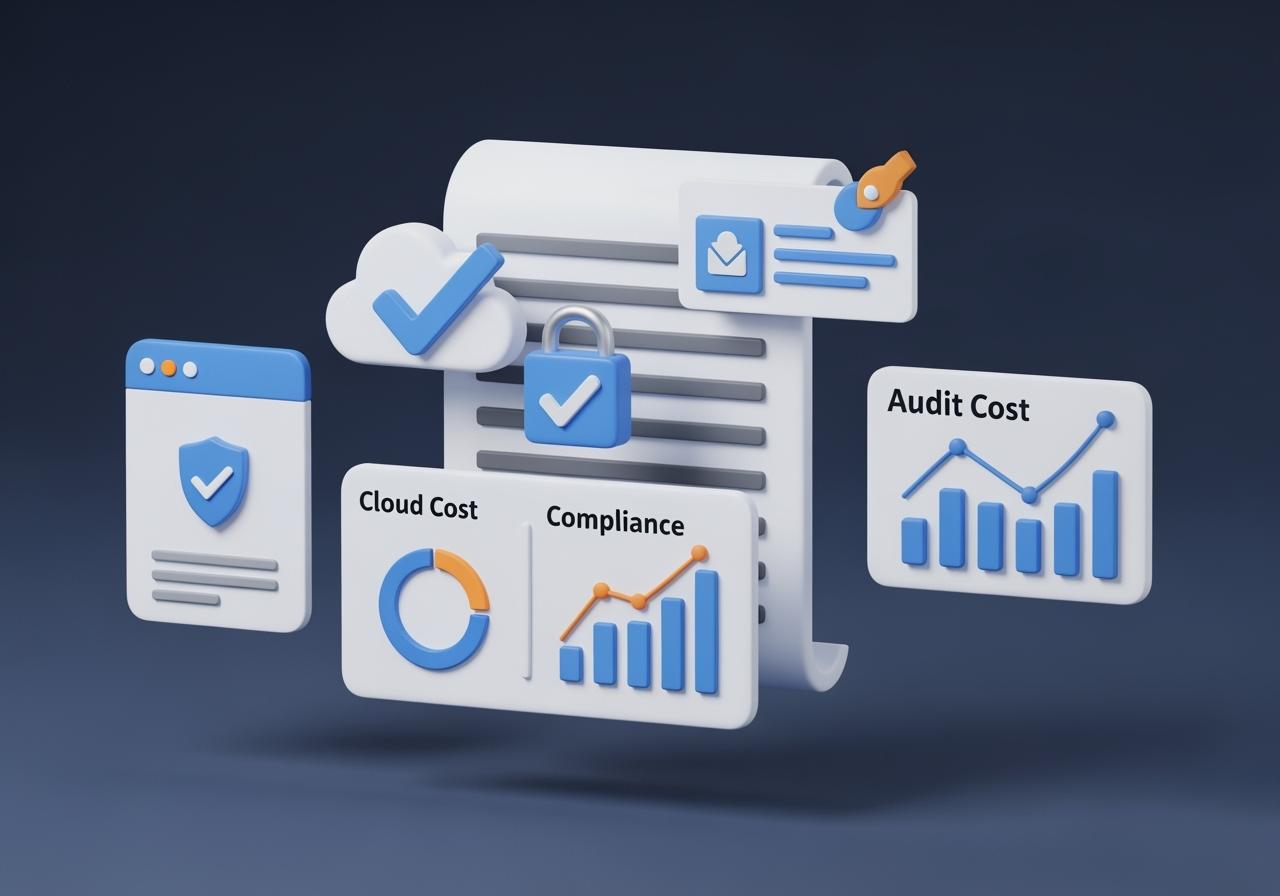The Trust Gap Blocking FinOps Success
FinOps promises to align engineering speed with financial accountability, yet many programs stall because stakeholders cannot agree on the numbers. Engineers feel micromanaged when finance questions every AWS change. Finance teams doubt projected savings without proof. Executives hesitate to reallocate budget because the story lacks evidence. CoreFinOps addresses the trust gap head-on with evidence-grade reporting, a design principle that treats every recommendation, action, and variance as an auditable artifact.
Instead of asking stakeholders to believe dashboards, the platform gathers immutable data sources that withstand scrutiny: signed manifests, before-and-after metrics, and commentary from the approvers involved. The result is a shared source of truth where cost optimization is no longer a he-said-she-said exercise. Everyone can trace how a dollar moved from cloud waste back into innovation or margin.
Proof That Lives in Immutable S3 Artifacts
At the core of CoreFinOps’ evidence strategy is the evidence vault, an Amazon S3-backed repository with object locking and checksum verification. Whenever an optimization runs-automated shutdown, rightsizing, commitment purchase-the platform captures configuration states, command logs, and supporting dashboards. These artifacts are stored immutably, tagged with the related ledger entry, and backed by retention policies aligned to compliance requirements. No more hunting through email threads when an auditor asks for proof.
The S3 vault also powers self-service confidence. Finance controllers, product owners, and engineering leaders can browse evidence for their domains without waiting on a FinOps analyst. They see the same artifacts the platform uses to generate reports, reinforcing transparency. Because the data is immutable, stakeholders trust that the story has not been revised to look better after the fact.
Ledger Tracking That Tells a Business Story
Raw evidence is valuable, but it becomes powerful when organized into a ledger that mirrors financial workflows. CoreFinOps’ ROI ledger records each optimization as a transaction: initiation date, owner, impacted accounts, forecasted savings, realized results, and amortization details. Ledger entries can be filtered by business unit, environment, or project code so cost accountability aligns with budgeting structures. Finance teams reconcile the ledger against general ledger entries, while engineering reviews highlight technical debt that still needs attention.
The ledger’s design language speaks to both audiences. Instead of technical jargon, entries summarize the business outcome-“Shifted analytics workload to Graviton, reducing compute spend by 28% and freeing budget for Q2 experimentation.” Each entry links to the supporting evidence bundle, creating an end-to-end trace from insight to action to financial impact.
Export Bundles That Travel Where Finance Works
Finance teams live in spreadsheets, ERP systems, and board decks. CoreFinOps meets them where they are by packaging evidence into export bundles optimized for different audiences. Controllers can pull a CSV with chargeback-ready fields. CFO staff receive a PDF briefing with charts, commentary, and control attestations. Compliance officers download JSON manifests to feed into GRC tooling. Every export references the same underlying ledger, ensuring consistency across formats.
Automated scheduling keeps stakeholders informed without chasing updates. Monthly close packages arrive with fresh actuals, quarter-end reviews highlight cumulative savings, and board-ready snapshots simplify storytelling at the executive level. Because exports include both projections and realized savings, there is no ambiguity about whether promised optimizations actually delivered.
Narrative Insights Bridge Finance and Engineering
Numbers alone rarely change behavior. CoreFinOps augments quantitative reporting with narrative insights generated by its understanding of cost drivers. Each report includes plain-language explanations of why a spike occurred, who owned the fix, and what downstream effects to expect. Engineering sees how their sprint decisions influenced margin. Finance sees which teams are leading in cost discipline. These narratives build empathy and equip leaders to coach their teams rather than litigate every line item.
Narratives also capture planned initiatives, such as upcoming commitment purchases or architecture shifts. When stakeholders know what is coming, they can plan budgets accordingly and avoid surprise variances. Over time, the narrative cadence cultivates a shared vocabulary for cost, reliability, and innovation trade-offs.
Compliance-Ready Reporting Without Extra Headcount
Preparing for audits or certifications often derails FinOps momentum. Evidence-grade reporting automates much of that burden. CoreFinOps aligns ledger entries with relevant control frameworks, timestamps approvals, and supports electronic signatures. When auditors request a sample of cost optimizations, you export a curated package showing the end-to-end lifecycle. The same artifacts satisfy internal audit, external regulators, and customer due diligence teams.
Because the process is standardized, organizations avoid the hidden cost of spinning up ad-hoc cross-functional war rooms before every audit. The FinOps team stays focused on continuous improvement, confident that compliance needs are met by design.
Making Trust the Default Operating Mode
Evidence-grade reporting shifts the FinOps narrative from reactive to proactive. Finance trusts engineering to run with automation because every action is documented. Engineering trusts finance to allocate budget because savings are credited fairly. Executives trust both teams because the story is consistent across artifacts, ledgers, and export bundles. Trust becomes the default state, freeing teams to experiment, modernize, and negotiate better pricing without second-guessing the data.
When trust is embedded into tooling, culture follows. Cross-functional reviews become collaborative strategy sessions, not forensic accounting. The FinOps practice graduates from reporting cost variance to shaping product investment decisions. CoreFinOps provides the backbone for that transformation.
Wrapping up
Bridging finance and engineering requires more than dashboards-it demands evidence everyone respects. CoreFinOps’ immutable artifacts, ledger tracking, and flexible export bundles turn cost optimization into a shared narrative backed by facts.
Armed with trust and transparency, organizations unlock faster decision cycles, cleaner audits, and a healthier relationship between innovation and fiscal stewardship.
